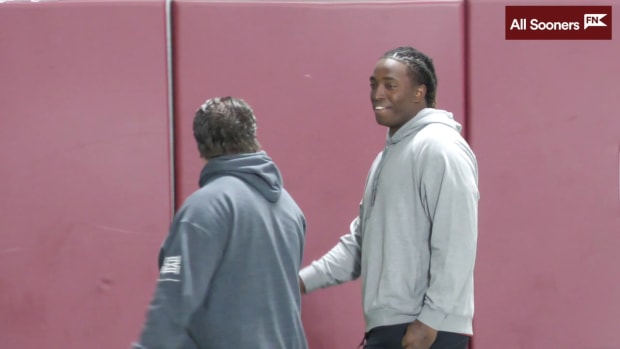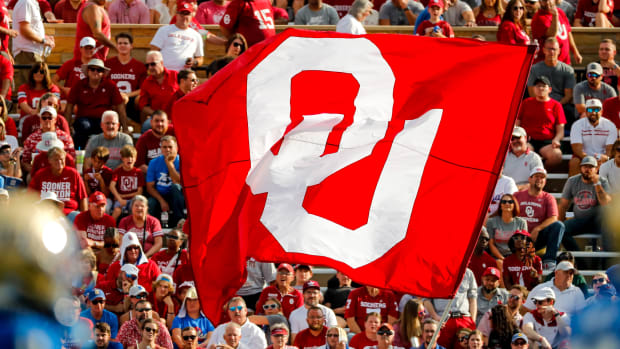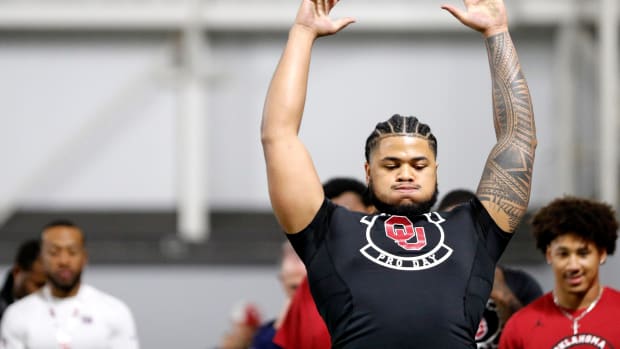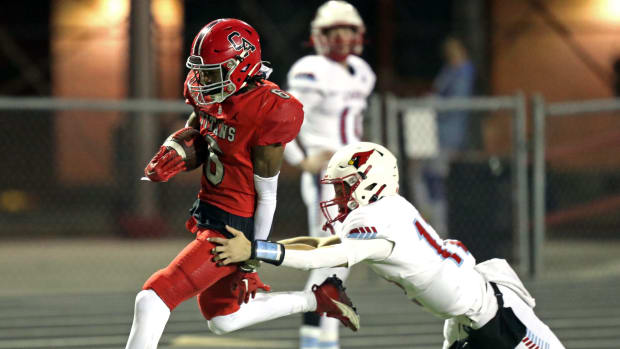OU to the SEC: Why the Move Was the Only Path Forward for the Sooners
COLUMN
Oklahoma is headed to the SEC.
Love it or hate it, it’s time to embrace the idea that OU athletics “Just Means More” now.
Barring a major roadblock in a plan which is reportedly at least six months in the making, the Sooners and their newfound best friends south of the Red River will be headed to the Southeast to collect a massive paycheck as collegiate athletics heads into a new era.
The path to the SEC won’t be perfectly smooth, but when weighing the pros and cons of the decision, it’s clear why a move to the SEC was OU’s only path forward.
Pro: Money Money Money
The conversation around Oklahoma’s move to the SEC has to start and end with the revenue spike.
Over the past few years, the Big 12 Conference has tried to keep pace, or at least stay in the same general stratosphere, as their richer counterparts in the Big Ten and the SEC. Bob Bowlsby has been able to keep the Big 12 in third as far as average monetary distributions to each school, ahead of the ACC and the Pac-12, and the Sooners have even been able to keep pace with their counterparts to the Southeast.
In 2019, the most recent year records have been made public, Oklahoma and Texas received revenue from the Big 12 just shy of $42 million dollars. Over the same fiscal period, the SEC distributed approximately $45 million to each of their member institutions, with the exception of Ole Miss, which was serving probation from the Hugh Freeze days.
Three million dollars a year isn’t grounds to jump ship, but the Big 12 and the SEC are not negotiating on the same playing field.
The SEC signed a deal with ESPN in December of 2020 that will be worth a reported $300 million annually, a massive jump from the $55 million annually that CBS had agreed to pay the league fir one game a week. On top of that, the SEC announced back in May that the conference would be dishing out an additional $23 million per school to help offset the losses during the pandemic.
Turn the page back to the Big 12, which was reportedly unable to extend its TV deals with ESPN and Fox, and it makes perfect sense as to why the Sooners and the Longhorns would want to start looking for greener pastures.
The only financial consideration for OU and Texas is not if they should leave, but when they should bolt. ESPN has reported that the duo could leave the conference as soon as 2023, but they would be on the hook for their final two years of TV revenue as a buyout, a number reportedly in the realm of $76 million each.
Con: The Competition
Oklahoma is the class of the Big 12, everyone knows that. The Sooners won’t waltz into the SEC and reel off six straight football championships. Not even Nick Saban’s Alabama has done that.
And while it’s unlikely OU toils into mediocrity like some would want to believe, the SEC brings to the table much stiffer competition than the Big 12, without question.
But this worry can be mitigated in two ways.
First, the implementation of a 12-team playoff means a bevy of two-and three-loss teams will be admitted into the College Football Playoff. Keep in mind, the SEC media machine would then be fully at the backs of the Sooners, campaigning for a potential two-loss Oklahoma to be firmly entrenched amongst college football’s elite.
Secondly, the better competition will also be balanced out by…
Pro: Recruiting

Perhaps no school has benefitted more in recruiting that Texas A&M since moving to the SEC
Vasha Hunt / USA TODAY Sports
OU is finally going to be in the cool kids club. No longer will Lincoln Riley have to fight the stigma of the Big 12 or Big 12 defenses on the recruiting trail, as his program will finally be on a more level playing field with the rest of the SEC. Will the Sooners continue to fight an uphill battle with the elite prospects in Georgia, Alabama and Florida? Of course. Regional advantages still exist.
Just last year, four of the top 10 teams in the final recruiting rankings hailed from the SEC. Eight schools from the conference appeared in the top 25.
But there will no longer be a separation between the Sooners and Texas A&M as Oklahoma continues to comb the Lone Star State for talent. OU has always overachieved against the Aggies when it comes to results on the field, and they’d be taking away A&M’s best weapon on the recruiting trail: the Big 12.
Con: Loss of History
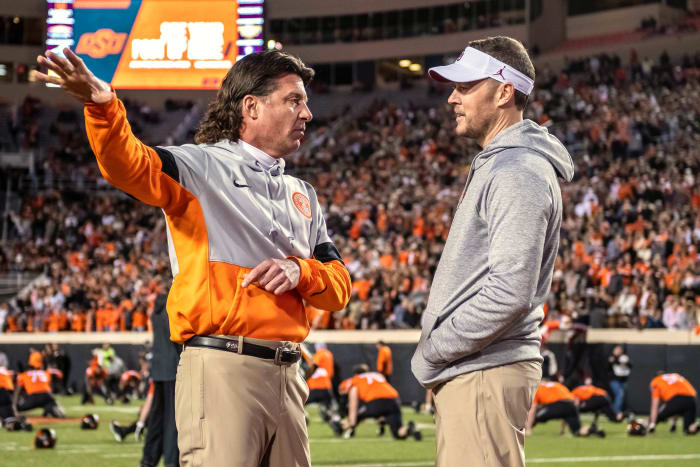
The future of the Bedlam Series is in in doubt with OU's impending move to the SEC
Rob Ferguson-USA TODAY Sports
The modern era of college football has already taken a toll on Oklahoma. This year’s meeting between the Sooners and the Nebraska Cornhuskers will be the first since the two sides met up in what was to be the final Big 12 Championship game in 2010.
Colorado and Missouri no longer frequent Gaylord Family Oklahoma Memorial Stadium.
And while SI Sooners has reported that declarations concerning the death of the Bedlam Series have been premature, it’s hard to imagine the in-state schools facing off every single year on the gridiron.
The Big 12 also had a nice regional setup.
Outside of trips to Iowa State and West Virginia, all of the other Big 12 schools were either a manageable drive or a short flight away for fans.
But OU fans appear to have grown tired of the same old matchups. Only a crazy person would suggest removing OU-Texas from the Cotton Bowl, but the nature of the game does remove Oklahoma’s marquee home game.
Outside of hosting OSU every other year, Kansas, Kansas State and Iowa State fail to consistently move the needle.
Pro: Influx of New Matchups
Any concern about stale opposition can be immediately rectified in the SEC.
OU will still have a few manageable road trips in Arkansas, Texas (in Dallas), Texas A&M and LSU, but what fans lose in convenience they’ll make up for in quality.
Under the proposed pod scheduling model, Alabama, Auburn, Florida, Georgia, LSU and Tennessee would all appear in Norman once every four years, and Sooner fans will have a chance to fan out across the Southeast and take in a bevy of new matchups.
Even the so-called “have nots” in the SEC will provide much better road atmospheres in some of college football’s true cathedrals.
Hate having to play Kansas every year? Swap it out with a trip to Nashville every four years to collect the promised win against Vanderbilt.
Happen to catch Ole Miss on a down year? Take in The Grove and one of the most legendary tailgating atmospheres in the country.
OU’s path in the Big 12 was simply not viable, and the pros far outweigh the cons, showing Joe Castiglione that the SEC was the Sooners’ only path forward.


